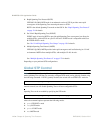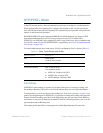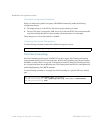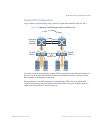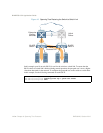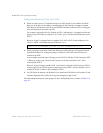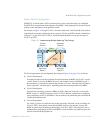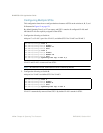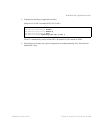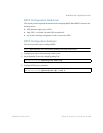
BLADEOS 6.5.2 Application Guide
118 Chapter 8: Spanning Tree Protocols BMD00220, October 2010
STP/PVST+ Defaults and Guidelines
In STP/PVST+ configuration, up to 128 STGs are available on the switch.
STG 1 is the default STG. Although ports can be added to or deleted from default STG 1, the STG
itself cannot be deleted from the system.
By default, STG 1 is enabled and includes VLAN 1 and all ports on the switch (except for
management VLANs and ports). Any newly created VLANs will automatically belong to STG 1
until assigned to another STG.
STG 128 is reserved for switch management. By default, STG 128 is disabled, but includes
management VLAN 4095 and the management ports (MGMT-A and MGMT-B).
By default, all other STGs (STG 2 through 127) are enabled, though they include no member
VLANs or ports. VLANs must be assigned to STGs by the administrator, but ports cannot be added
directly to an STG. Instead, ports must be added as members of a VLAN, and the VLAN must then
be assigned to the STG. Whenever a VLAN is assigned to a new STG, the VLAN is automatically
removed from its prior STG.
If ports are tagged, each tagged port sends out a special BPDU containing the tagged information.
Also, when a tagged port belongs to more than one STG, the egress BPDUs are tagged to distinguish
the BPDUs of one STG from those of another STG.
Adding a VLAN to a Spanning Tree Group
If no VLANs exist (other than default VLAN 1), see “Creating a VLAN” on page 119 for
information creating VLANs and assigning ports to them.
Otherwise, assign a VLAN to an STG using the following command:
Note – For proper operation with switches that use Cisco PVST+, it is recommended that you
create a separate STG for each VLAN.
RS G8124(config)# spanning-tree stp <STG number> vlan <VLAN number>



